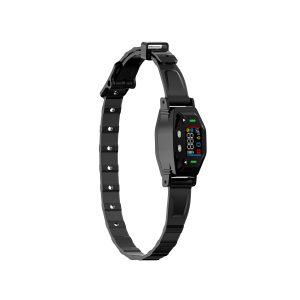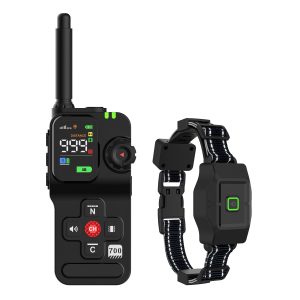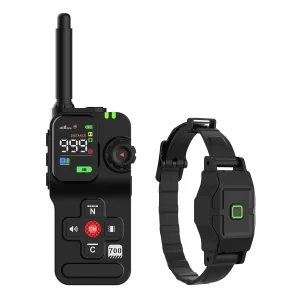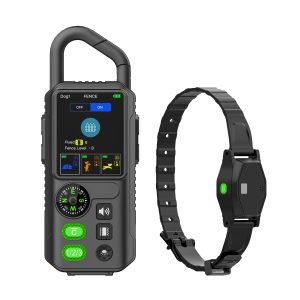Every dog owner dreams of a well-behaved companion who reliably responds to commands, whether in the backyard or at the dog park. While traditional training methods are effective, sometimes you need a tool that offers consistency and control from a distance. This is where a modern Remote Dog Trainer becomes an invaluable asset. This comprehensive guide will help you understand how these devices work, explore the different types available, and provide crucial tips for selecting the best one for you and your furry friend.
How Does a Remote Dog Trainer Work?
At its core, a remote dog trainer is a communication system. It consists of two main components: a handheld transmitter that you keep and a receiver collar that your dog wears.
The process is simple yet effective:
-
You press a button on the transmitter to send a specific radio or digital signal.
-
The receiver collar picks up this signal.
-
The collar then delivers a precise stimulus to get your dog’s attention.
The key to modern, humane training is that this stimulus is not meant to punish, but to interrupt unwanted behavior (like chasing a squirrel or digging) and to reinforce known commands from a distance. The best trainers use the lowest effective level of stimulation, much like a tap on the shoulder to regain focus.
Common types of stimuli include:
-
Audible Tone: A beep or vibration-like sound used as a warning or recall signal.
-
Vibration: A buzzing sensation that serves as a stronger attention-getter without any static pulse.
-
Static Stimulation (E-stim): A mild, safe, and adjustable static pulse that mimics the natural static shock you might get from touching a doorknob. It is crucial that this is used correctly and at the appropriate level for the dog’s temperament.
What Types of Remote Dog Trainers Are Available?
Remote dog trainers are not one-size-fits-all. They come in various styles to suit different needs, dog sizes, and training goals.
-
By Correction Method:
-
Tone-Only Trainers: Use only a sound. Ideal for sensitive dogs or as a recall tool.
-
Vibration-Only Trainers: A great alternative to static stimulation, perfect for dogs that don’t respond to sound.
-
Static Stimulation Trainers: The most common and versatile type, offering multiple levels of adjustable correction.
-
Spray (Citronella) Trainers: Release a burst of citronella spray, which most dogs find unpleasant. A good option for owners who prefer a non-contact method.
-
-
By Range:
-
Standard Range (300-1000 yards): Sufficient for most backyard training and neighborhood walks.
-
Long-Range (1-2 miles): Designed for hunting dogs, field training, or dogs with a high prey drive that may run far.
-
-
By Special Features:
-
Waterproof Collars: Essential for dogs that love to swim or get trained in the rain.
-
GPS Integration: Advanced systems combine training with real-time location tracking, perfect for adventurous escape artists.
-
How to Choose the Right Remote Dog Trainer
With so many options, selecting the right system can be daunting. Here are the key factors to consider:
-
Your Dog’s Temperament and Size: A sensitive Border Collie will require a very different stimulation level than a stubborn Bulldog. Choose a system with a wide range of adjustable levels.
-
Training Environment: Do you need a basic yard trainer or a long-range system for open fields?
-
Ease of Use: The transmitter should be ergonomic with clearly marked buttons. The collar should be lightweight, waterproof, and comfortable for your dog.
-
Battery Life: Look for systems with long-lasting rechargeable batteries to avoid frequent charging interruptions.
-
Safety Features: Automatic shut-off features and a safety lock to prevent accidental correction are must-haves.
-
Brand Reputation and Reviews: Invest in a brand known for quality, reliability, and good customer support. Read reviews from other dog owners.
Why Choose a Professional Supplier?
Purchasing from a dedicated dog trainer supplier, rather than a generic online marketplace, offers significant advantages. You gain access to expert advice, genuine product warranties, reliable customer service for troubleshooting, and high-quality products designed for effectiveness and animal welfare. A reputable supplier stands behind their products and is invested in your training success.




